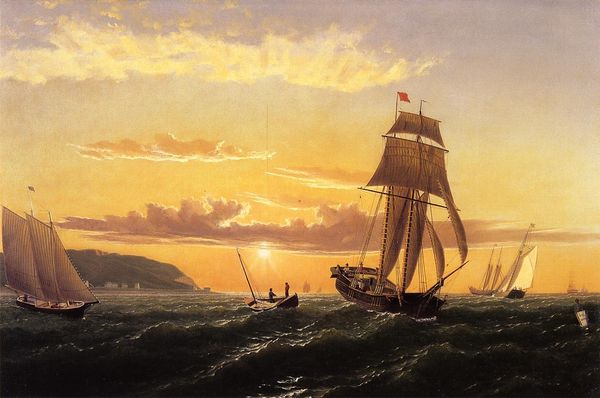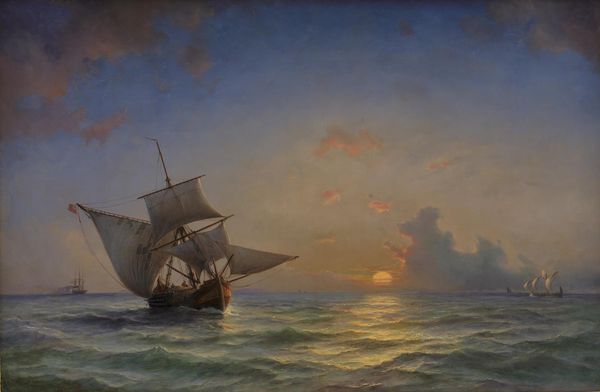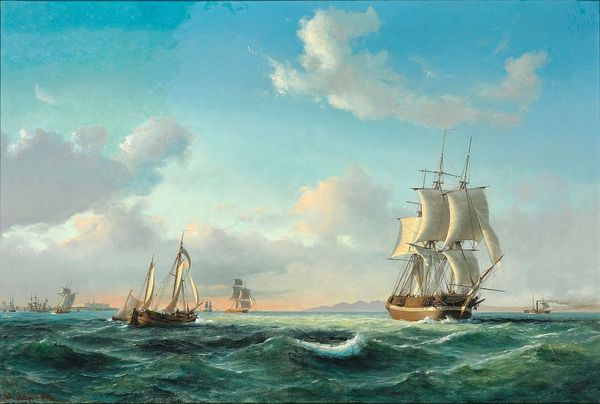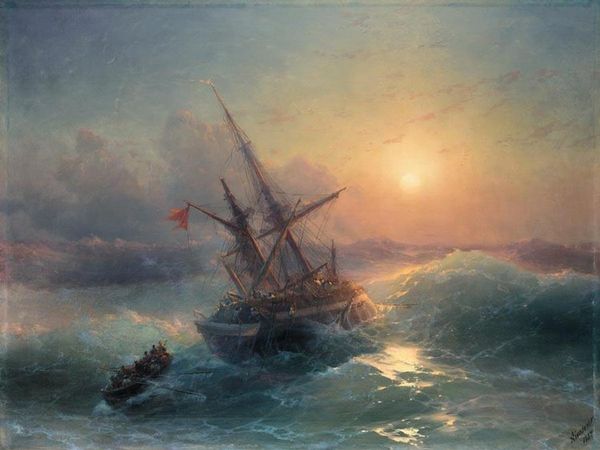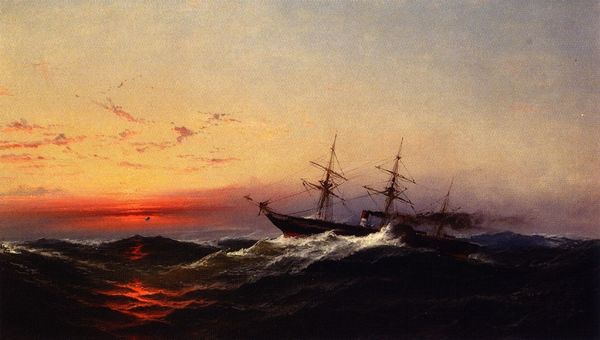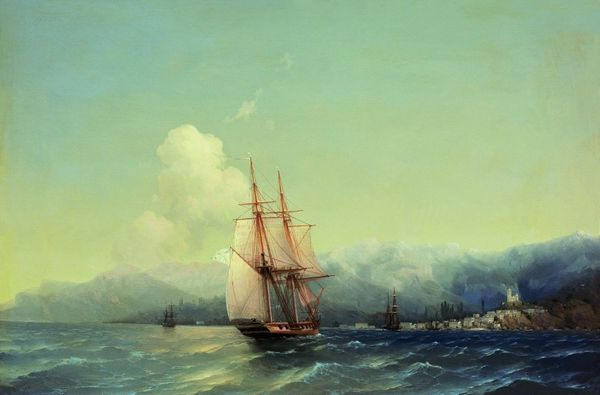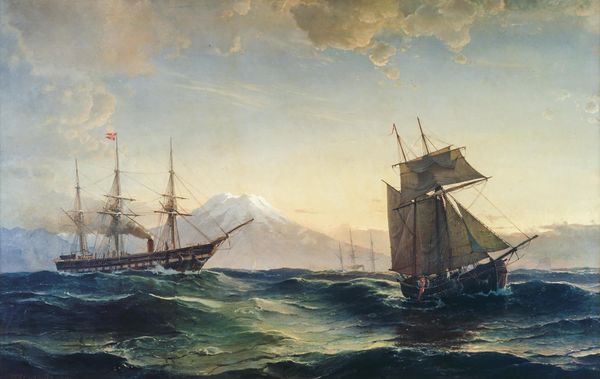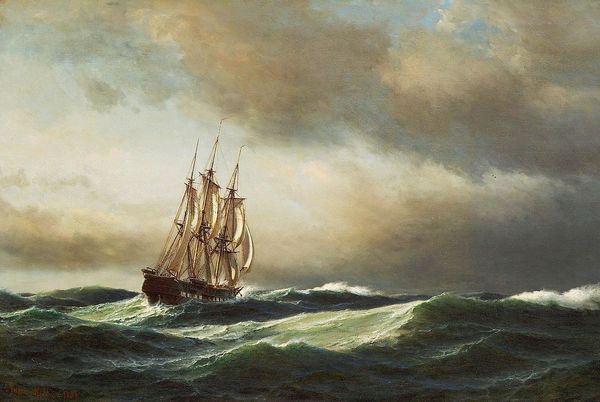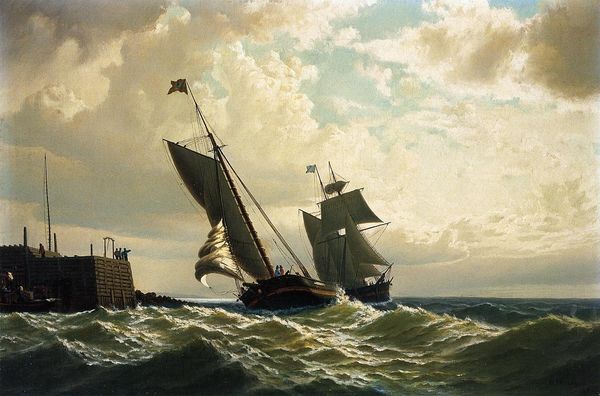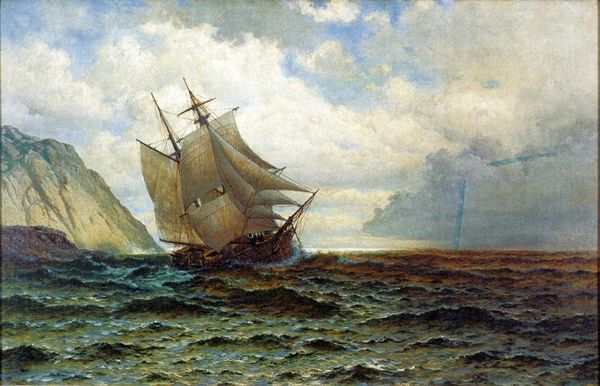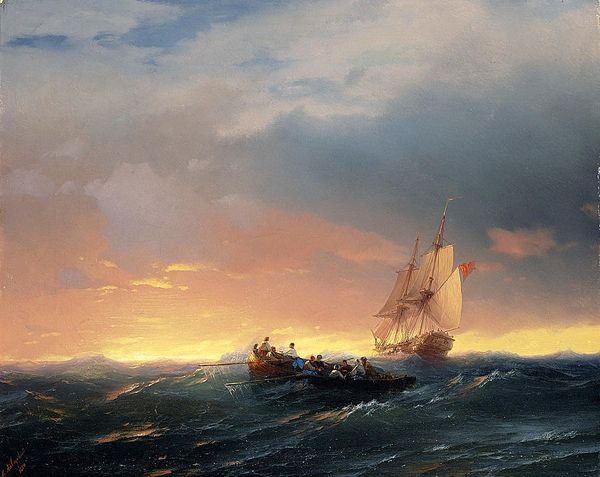
Copyright: Public domain
Editor: William Bradford’s oil painting, "Fresh Breeze of Sandy Hook," made in 1860, is truly captivating. I’m struck by the rough seas depicted and the ships struggling through them. What can you tell me about this work? Curator: Let's consider the conditions of artistic production. Bradford, like many maritime artists, relied on patronage related to seafaring industries. The painting romanticizes a dangerous form of labor. Are we meant to focus on the 'fresh breeze,' or the economic realities inherent to these types of voyages, and what they carried: goods, people, often under oppressive labor conditions? Editor: That's a perspective I hadn't considered. I was seeing it more as a beautiful, almost heroic, depiction of man versus nature. But, thinking about the ships as a form of labor… Curator: Indeed, how does Bradford handle the materiality of the paint to depict these elements? Notice how the light emphasizes the wave’s texture, drawing your eye to it. The brushstrokes make it turbulent, but where do you see the mark of industry itself, perhaps in the ship's construction, wear, or loading and unloading activities? Editor: Now I see it. The details on the ship—the rigging, the sails—almost appear like cogs in a machine when contrasted with the freedom of the sky and water. There's this tension between man's control and the natural elements. Curator: Precisely. Consider too the romantic era. Was Bradford idealizing or realistically depicting maritime labor? Editor: I think it's a combination, a push-pull. It reflects an era where industry and romanticism are intertwined. I am so grateful for your expert analysis because now I notice nuances in the piece that escaped me earlier! Curator: It's these questions about materiality, labor, and the means of production that allows us to critically engage with the art of Bradford's time and see past surface aesthetics.
Comments
No comments
Be the first to comment and join the conversation on the ultimate creative platform.
